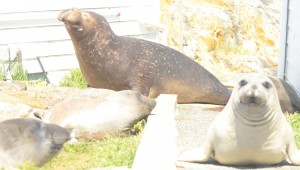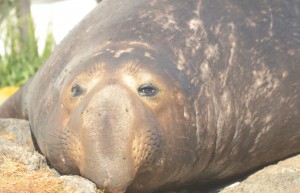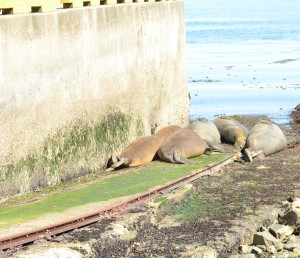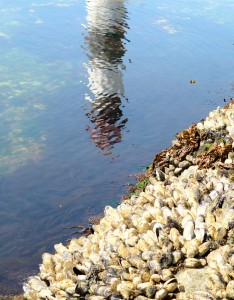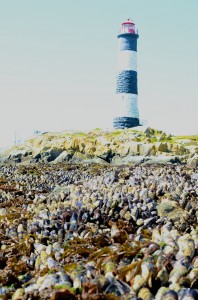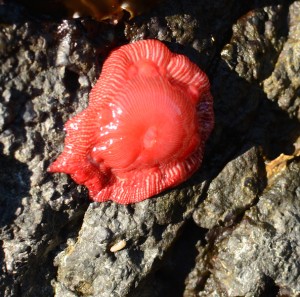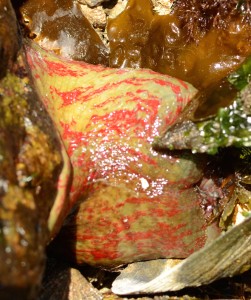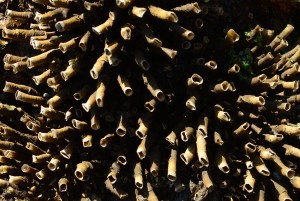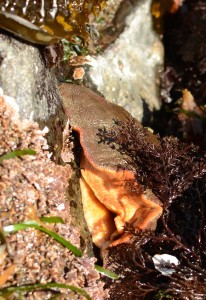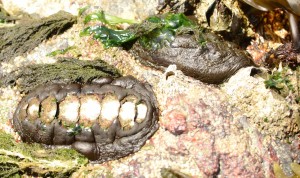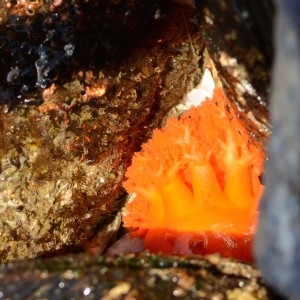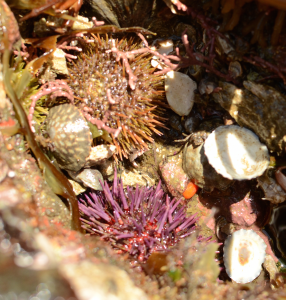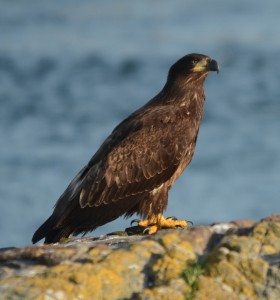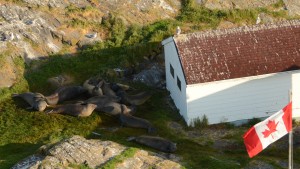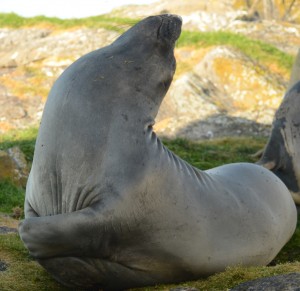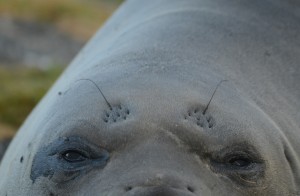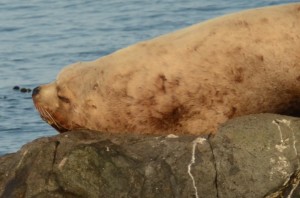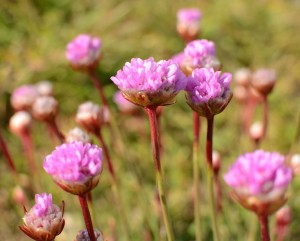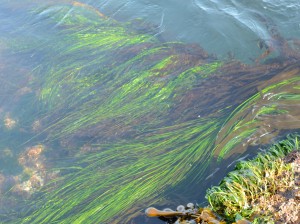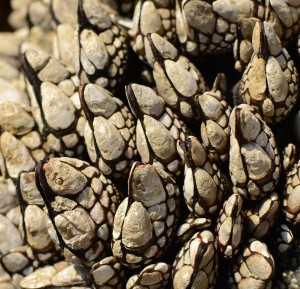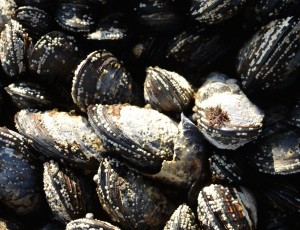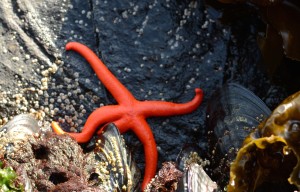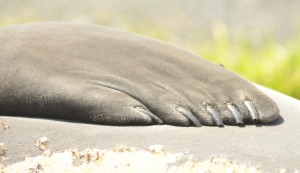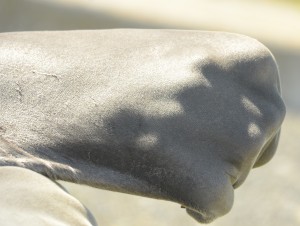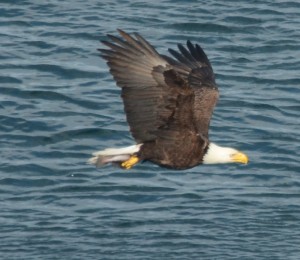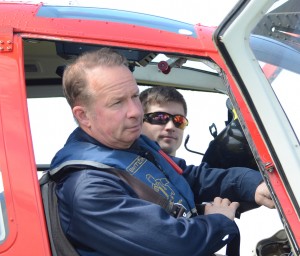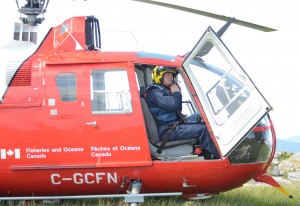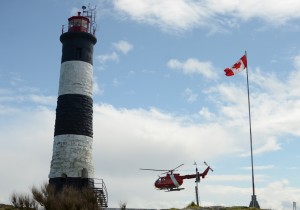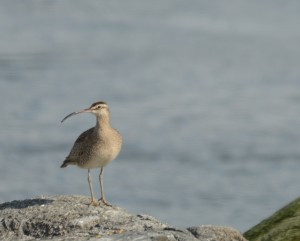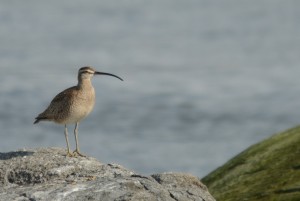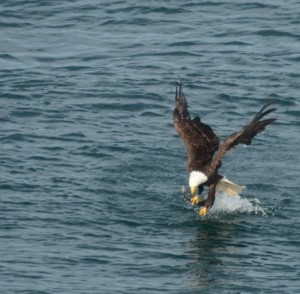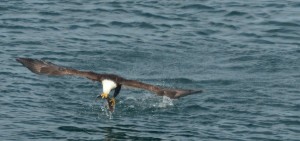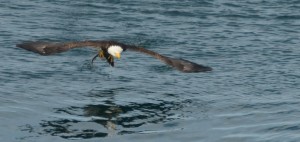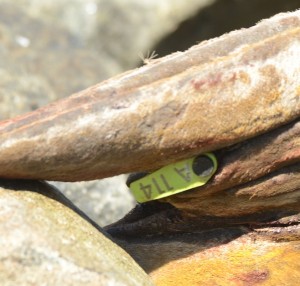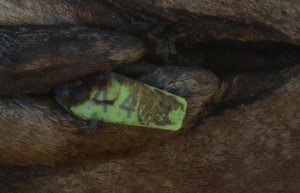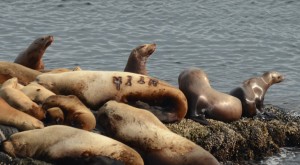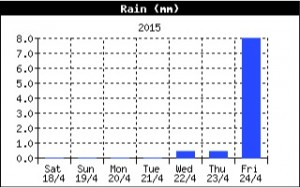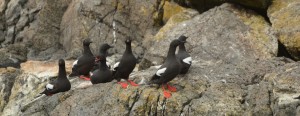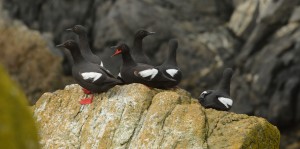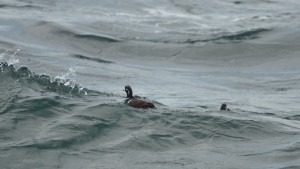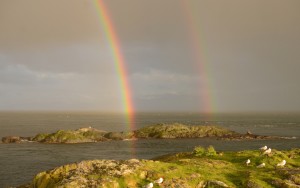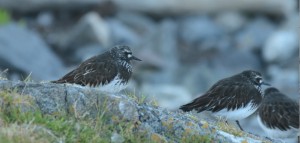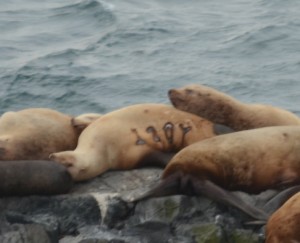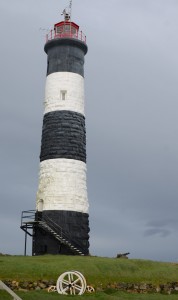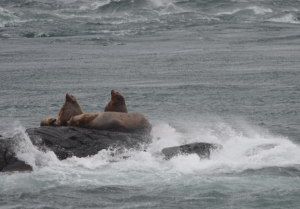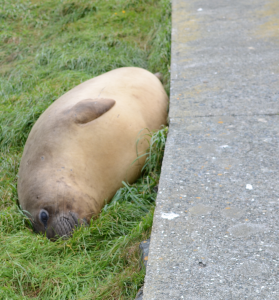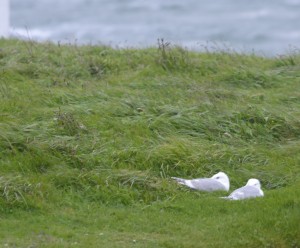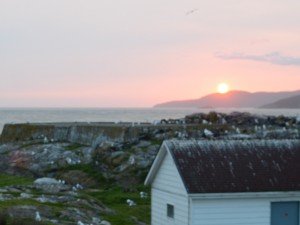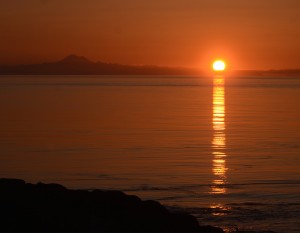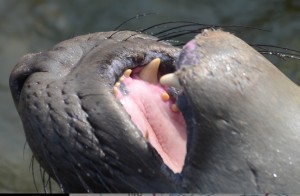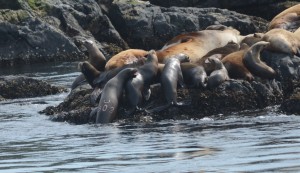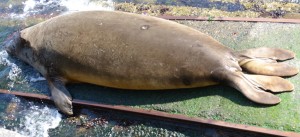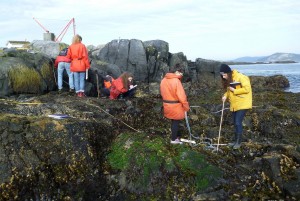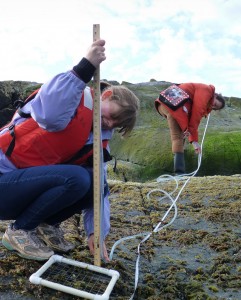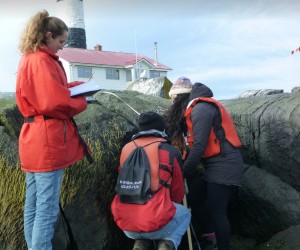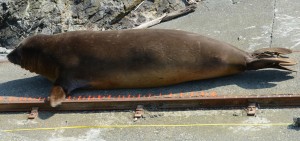Wednesday and Thursday were both westerly days, wet in the mornings, clearing in the afternoons, with winds increasing through the day. Wednesday winds reached 25 -30 in the evening and it was much quieter on Thursday with an evening breeze of 10 – 15. on Fog reduced visibility to about a mile this morning but quickly burned off. The barometer stayed fairly steady around 1010 hPa both days and there is a strong wind warning (20 – 30 knots) in effect for Friday afternoon.
Wednesday, two whale watching vessels were observed in the Ecological Reserve and none on Thursday. Several sport fishers passed through at a respectful speed both days. There was military blasting on Wednesday with no apparent effect on the wildlife other than Steller’s Sealions neck craning.
A large male Northern Elephant Seal arrived at Great Race yesterday along with a record (for me) number of seals 17 ashore here for the moult. More length measurements were made on new arrivals and the big guy who were calling Floyd in honour of large portions, measured 3.22 meters from the tip of nose to tip of tail. He seems a mellow fellow but very large and I suspect, still growing.
A new (to me) female who is just starting her moult arrived today. She is tagged and her very worn number is 5086.
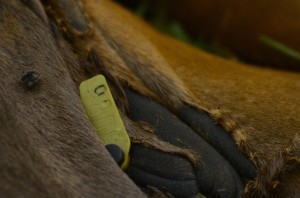
This female is larger than the other tagged animals I have seen. You can see the first few roles of skin and fur as her moult starts on her hind flippers.
Thursday is census day and here are the results
Northern Elephant Seals 35 (including 18 on Great Race & 17 on Middle)
Harbour Seals 101
California Sea lions 27
Northern Sea lions 24
Canada Geese 24 (+18 goslings)
Harlequin Ducks 3
Pelagic Cormorants 18
Double Crested Cormorants 19
Bald Eagle 1 adults, 2 sub-adults
Black Oystercatchers 12
Whimbrels 8
Pigeon Guillemots 227
Glaucous-winged Gulls total ( adults in nesting areas; adults in roosting/resting area; sub-adults in roosting/resting area)
Common Raven 1
Barn Swallows 2
Savannah Sparrow 2
American Pipets 3
Wednesday Courtney brought Guy and Christine out on Wednesday for eco-guardian training and to trouble-shoot electrical generation issues. While she was here she and Guy cleaned the battery tops of water and attempted to fix the Lister’s over-speed issue. With load (boat winch), it went to over-speed, which shut it down and the power to the main house. Running the de-salination unit did not affect the generator. Christine trained on seawater sampling, faunal observations and had an introduction to the house and island.

